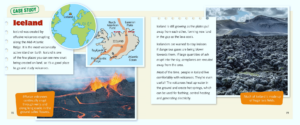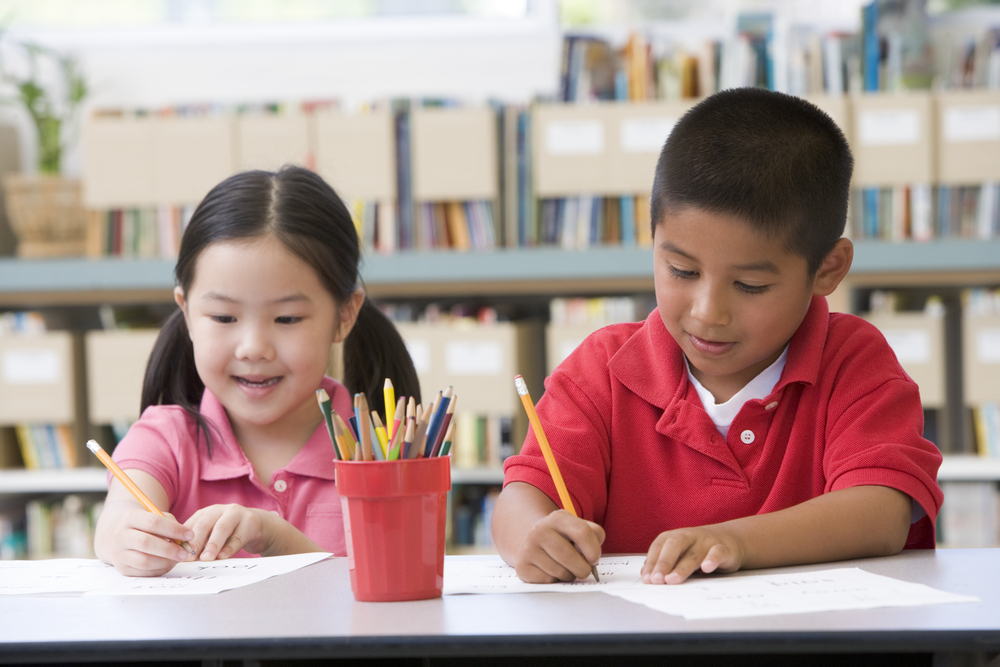
Collins Big Cat author Emily Dodd shares ideas on how to get children excited about writing non-fiction. Although the ideas are aimed at teachers, they can easily be adapted for parents to support their children’s writing at home.
Imagination and Memory
When I’m starting children off on a writing challenge, I tell them they have two bags in their heads. One bag is their memory. It’s full of the things they learn and experience. They can add to it by doing new things, learning at school and by reading books. The other bag is their imagination.
To help them to understand, I draw something on the board and ask them to guess what it is. They guess ‘butterfly’ before I’ve even finished drawing. I tell them they knew it because they have seen one before so they went into the memory bag and pulled out ‘butterfly’.
But then I remind them of their imagination and how that bag works. I have a little cloth bag with me. I say “Perhaps you like tigers so you use your imagination to make a butterfly like this…”
(I pull a butterfly from the bag, it’s striped like a tiger – has anyone seen such a thing!?)
Or perhaps your favourite colour is red and you like a disco? (I pull out a red disco sparkly butterfly).
I remind them that every single person has different memories and a different imagination so we can use these to come up with the most amazing stories and with brilliant ways of explaining information.
Non-Fiction
There are many different ways to communicate information. We can use facts, diagrams, short descriptions, bullet points, graphs and charts, case studies, real-life examples, photographs, interviews… the list goes on.
Writing facts could be a good way to get children to start thinking about the mechanics of non-fiction writing. What’s a fact about yourself? Something surprising or interesting. Something that’s not obvious.
You could put a few facts together around something they’ve already been learning about using a riddle. Children love guessing. You could challenge them to write their own riddles too?
 What about explaining something in a way others can understand? To get them thinking about that, ask them to think of one of their favourite things (it could be a sport or computer game) and then ask them to describe it to someone who’s never played it or heard of it before. Perhaps to an alien. Or an Inuit who doesn’t play golf. They are learning the skill of describing something without assuming prior knowledge.
What about explaining something in a way others can understand? To get them thinking about that, ask them to think of one of their favourite things (it could be a sport or computer game) and then ask them to describe it to someone who’s never played it or heard of it before. Perhaps to an alien. Or an Inuit who doesn’t play golf. They are learning the skill of describing something without assuming prior knowledge.
Say it’s golf, they might say (with some prompts and questions as they go):
“It’s a sport (but what’s a sport?) …something you do for fun, and you use a club (what’s a club?) it is a long metal stick with a metal blob on the end, and you use the club to hit a ball across a green (what’s a green?) which is grassy with sandy bits, and you try to get the ball into a hole. There’s a little flag above the hole so you know where to aim for.”
Then you could ask, would it be easier to explain this with a picture? (YES!)
Author residency
I recently worked as the Scottish Book Trust author in residence with Annette Street Primary in Glasgow. 90% of children in the school don’t have English as a first language so the residency was all about encouraging confidence in the children. We did this by breaking tasks down into steps they could do and enjoy. We used non-fiction reading and writing to do this and at the end of the residency the class had produced their own non-fiction book, gained a lot of confidence and thoroughly enjoyed themselves.
Here are a few ideas from the residency that you could try in class or outside; they could also be adapted for home learning.
To get the children to work on their descriptive writing, I gave them an object and white boards in groups. They had to come up with as many words between them to describe the leaf. They were learning about adjectives without knowing they were, gaining vocabulary and having fun.
Next I chose a pinecone and this time they had to say what it reminded them of. They came up with metaphors and similes working in groups and it was a competition to come up with as many as they could.
Back in class they put their adjectives, metaphors and similes together to write and illustrate nature poems.
Later when they started on their non-fiction book writing, they used the same skills to describe a volcano. Questions such as ‘what does lava remind you of’ (similes) and ‘how would you describe the shape and look of volcanoes (adjectives) were used as a starting point.

Using books for research
It’s easy for children to just copy a book they’re reading so instead you could give them a case study from a non-fiction book and ask them to create some facts from it (when there aren’t already fact boxes).
Structure and Narrative
It’s just as important to think about beginning, middle and end in non-fiction as it is in fiction. What do you need to explain first? What do you need to know before you can explain the next bit?
Writing about a topic they’re passionate about
“When we speak or write, we can communicate information or we can communicate our heart with passion. The best communication does both.”
With young people so committed to caring for their planet, how could they combine information, creativity and their passion in writing to change the future? One way we can show we care about our environment is through writing stories. A story can bring an endangered species to life and cause others to care about a character they can identify with.
I write fiction and non-fiction stories featuring endangered species and real animal behaviour. I’ve written about dancing birds who can’t dance (Capercaillies are rare birds that dance in real life), camouflage as an escape from danger and an osprey trying to throw a fish mid-air to another osprey – this happened in real life. Nature is amazing and the stories are already there! We just need to write them.
Before we can write a nature story, we need to find out about nature in the first place. That could be through hearing from experts, watching documentaries or a school visit. That’s where non-fiction books can come in too.

This blog is by Emily Dodd, author of several non-fiction Collins Big Cat books.
Emily is passionate about science, wildlife and storytelling and was a judge of the 2019 Collins Big Cat writing competition. The theme was ‘Our World, Our Home: Be a Big Cat Eco-warrior’ in response to the growing importance of the environment on our daily lives. You can view Emily reading one of the winning entries here.
She is also a screenwriter for CBeebies science programme Nina and the Neurons and the author of fiction and non-fiction books.
Emily spent several years working in museums and has written and presented science shows for the Edinburgh International Science Festival, the Scottish Seabird Centre, Edinburgh University, National Museums Scotland and Our Dynamic Earth.
Emily was also the 2012/2013 Scottish Book Trust Reader in Residence at Leith Library, Edinburgh.



